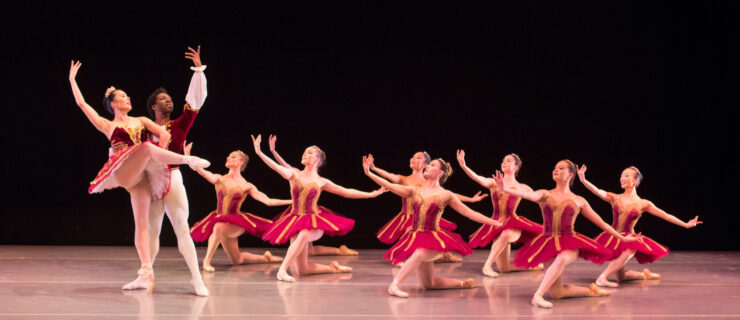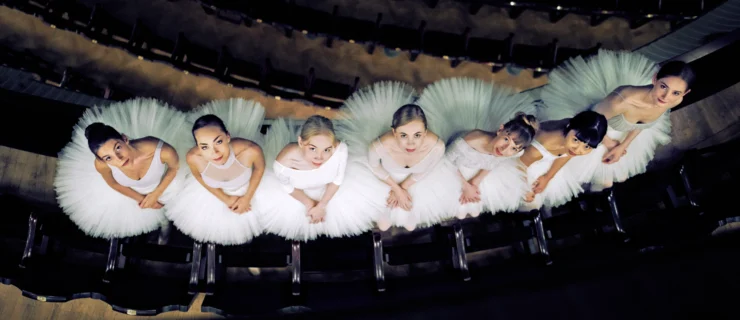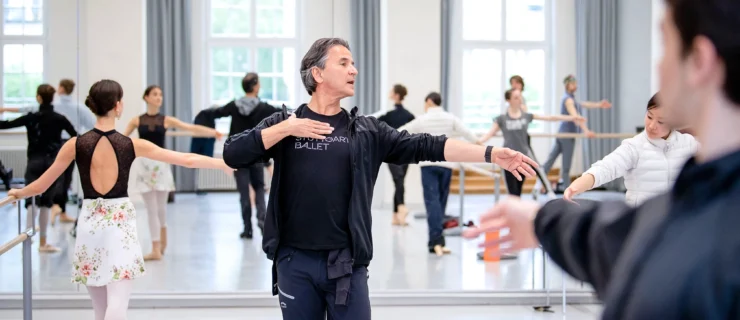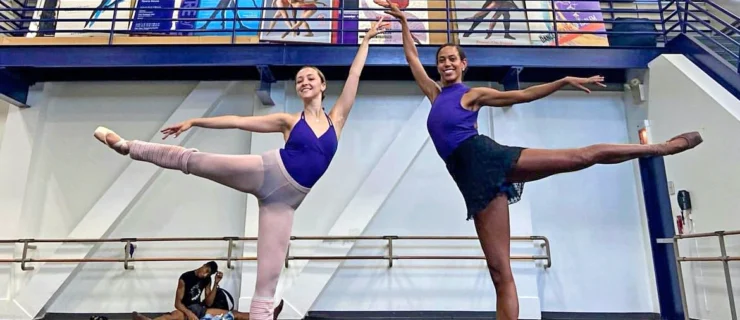Fight for the Future
Though the success of such television shows as So You Think You Can Dance and Dancing With The Stars might suggest that interest in dance is on the upsurge in America, many ballet companies across the country are floundering. So what tactics can companies use to survive—and thrive—in today’s cultural climate?
In the early 1990s, medium-sized companies faced difficult financial times, but between 1992 and 2000, not one company with a budget over $1 million perished, according to John Munger, director of research and information at Dance/USA. In the last year alone, however, Ballet Internationale and Oakland Ballet have permanently closed their doors—and Ohio Ballet may soon follow. Additionally, Ballet Pacifica, Dance Theatre of Harlem and Eliot Feld’s Ballet Tech remain on hiatus until more money can be raised.
“We’ve seen really wonderful companies just disappear. There are some that are on the brink, too; they are right at that waterfall,” says Pittsburgh Ballet Theatre Artistic Director Terrence Orr, whose own company found in 2004 that it was spending more than it was making.
While smaller companies are accustomed to some strain, bigger companies often enjoy more visibility and continuous support. Some big companies also benefit from larger endowments, which keep them safely in the black each year. Medium-sized companies, however, may be at the highest risk, because the amount of money they need to stay afloat tends to be unmanageably high when revenue drops.
Once money problems arise, often due to declining donations and ticket sales or a general economic downturn, most companies first cut back, understandably, on their budgets. In fact, cutbacks are a startling trend at many existing companies, Munger says. His research shows that out of the 75 to 80 dance companies with budgets of more than $1 million (most of which are ballet companies), three or four made budget cutbacks from 1999 to 2000—numbers that are considered normal. Nine cut back from 2000 to 2001. But in 2002, the cutbacks numbered 20, and in 2003 it was 25, and in 2004 a staggering 41.
At PBT, Orr says, the company slashed its budget from $8 million to $6.4 million, partially by eliminating the orchestra and using recorded music instead (Atlanta Ballet will also use recorded music this season). PBT’s orchestra will return for two productions this season, with Swan Lake and a Balanchine program, but the company will reduce the number of performances in its larger venue, the Benedum Center for the Performing Arts.
“It shows our supporters that we are really trying to right this ship,” Orr says. “This is what it means, and this is the truth of it.”
Artistic directors are getting savvy about these trends, and many presented ideas at the recent Dance/USA National Roundtable in Portland, Oregon. Sessions covered a variety of topics, including what companies can do to create successful business models.
While each company’s struggles are different, all are looking for new ways to satisfy their artistic visions and bring in more revenue. For some, that means staying small and shunning further growth, a method that reduces the pressure to push for a larger audience. That tactic seems to be working for such companies as the James Sewell Ballet and Diablo Ballet.
After Diablo Ballet suffered an almost fatal deficit in 2002, which it survived by appealing to the public, Artistic Director Lauren Jonas not only decreased the number of dancers, but also became the company’s executive director. Now that the company has slowly rebuilt itself, she says, it will stay at 10 to 12 dancers.
“It’s really important for me to financially take care of the people we have, pay them well and give them benefits—to keep it containable that way,” Jonas says.
At the roundtable, Tom Mossbrucker, artistic director of Aspen Santa Fe Ballet, presented his company’s two-city model (Aspen, Colorado, and Santa Fe, New Mexico, are both home cities). The model has worked at ASFB while it has failed elsewhere—most notably Cleveland/San Jose Ballet—because Mossbrucker has kept the company much more portable, with 10 dancers and no full-lengths. The result has been six additional weeks of work for his dancers.
Other companies have searched for new ways to present themselves to new audiences. Some are striking up collaborations with other arts organizations in their communities. In October, Miami City Ballet will move into the new Carnival Center for the Performing Arts, along with three resident music companies. After receiving a lot of help from the city, Sacramento Ballet has just mounted a capital campaign to raise $4 million to start a similar venture with the local opera, symphony and musical theater group. The new building is scheduled to open within the next two to three years.
In the meantime, Sacramento Ballet found a way to optimize the use of its current space. The now yearly Beer and Ballet event allows audiences to enjoy a performance with a beverage in the company’s casual setting. “Some people don’t like the idea of Beer and Ballet,” says Artistic Director Ron Cunningham, “but you know, they do like studio shows, and we purposefully call it that because I like the idea of—and my wife [co-artistic director Carinne Binda] hates this phrase—taking the capital C out of culture.”
Richmond Ballet also has its own studio theater and regularly invites audiences to come to see newly commissioned work in a space that doesn’t require additional rent. Plus, they can start the evening whenever they want, often choosing to begin at 6:30 pm, so people can come straight from work and get home at a reasonable hour.
“Everyone thought I had lost my mind when I brought a lot of the works into the new building, and frankly, it was largely financially motivated,” says Stoner Winslett, artistic director of Richmond Ballet. “But people started coming and word started spreading. The stage is as big as [the one at] the New York State Theater and the house is 214 seats, so it’s like you’re in it. And I think it’s meaningful for people to be right up next to the dancers and see the sweat—to see these new works come to life.”
The trick to discovering new means of survival, say artistic directors, is knowing the difference between a good idea and a clunker, one that will fit with your artistic vision and not compromise your company’s standards. Because even though money talks, it’s still the artistic freedom that guides a ballet company.
“Our job is to be a leader, not a follower, of the audience,” says Winslett. “In the early days of Balanchine, there were few people coming in, but he was willing to keep going and more people [eventually] came. If something is important enough to you, you have to figure out a creative way to do it within the bounds of financial responsibility.”





